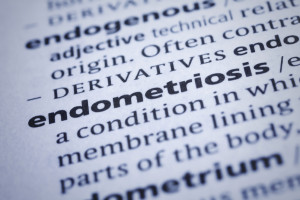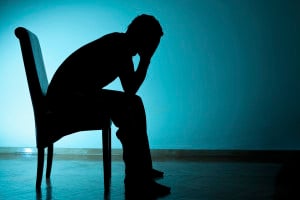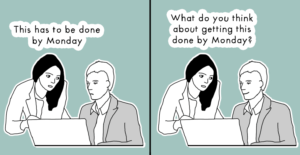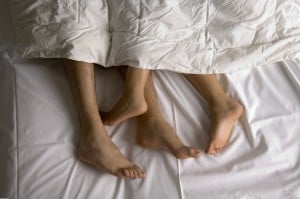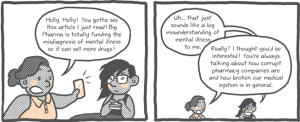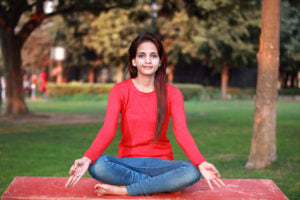(Content Warning: Self-harm, suicidal thoughts, sexual abuse)
In all the frenzied discussion of menstrual cramps, period positivity, free-bleeding, and access to contraception – among many other reproductive-related health concerns – there’s another pressing issue that has gotten practically no media recognition, not even within feminist circles.
Estimates put the occurrence of a disease known as endometriosis at around one in ten for cis women and people assigned female at birth, with fairly rarer rates among cis men and people assigned male.
It’s such a terrifyingly common disease, and yet there’s so very little information on its cause, its effects, and its cure.
Endometriosis involves endometrial cells appearing in the rest of the body, forming painful lesions, interfering with other bodily processes, causing infertility, and upsetting how long the menstrual cycle is. It can lead to hemorrhage, other chronic illnesses and pain conditions, and often isn’t diagnosed for over a decade.
And as my fellow endopeeps and I know, there’s nothing more frustrating than hearing someone go on and on about how wonderful their menstruation is or how this one time, they had cramps.
As period positivity, free-bleeding, and contraception become larger topics within feminist circles, those of us who have hormonal or reproductive-related chronic illnesses feel extremely left out.
These issues and illnesses are literally painful for us, and most of us are suffering in silence. While our experiences could help inform future goals and discussions about health, reproduction, and self-love, we haven’t yet really seen anything addressing us.
I’m changing that right now, for all our sakes.
The following are all reasons we might not give much of a shit about your enthusiasm for period positivity (because none of us has ever had a period we would call positive), your calls to join the free-bleeding effort (because it would look more like a river of blood – sorry, but we need our pads), or your discussions about contraception (because for us, it’s necessary to control our pain and bleeding, not our fertility).
1. It’s So Much More Than Blood and Cramps
First of all, some people don’t even know the difference between the vulva, labia, urethra, and vagina. Proper education about taking care of your genitals is far and few between. So understanding that the symptoms you’re having might actually point to a much deeper underlying issue can sometimes take, literally, decades.
I always used to laugh at the way commercials marketed “feminine hygiene products.” It always seemed like some great joke: a few tiny drops of some weirdly blue liquid on a pad, the struggle to put on pants that fit just the day before, or the tampon flowering I personally found to horrifying (for reasons I’ll mention later).
From the time I started menstruating, it has been pure hell.
I bled heavily, in such huge clots that I sometimes wondered if I’d given birth to my organs. I bled for weeks – so long that I thought it would never stop, that I’d need to be given transfusions of blood.
I ached for months at a time. Super sharp pains as if I’d been sawed in half during the initial days of bleeding would give way to lower back pain and Hulkan cramps that never seemed to go away.
As it turns out, endometriosis alters the menstrual cycle in the worst way – by causing painful inflammation, worsening menstrual symptons, and in some cases extending your period (if there are adhesions around or within the uterus). Lesions and adhesions can form literally anywhere in the body (yes, even in your brain), leading to some of your internal organs being permanently bound together, various other related health conditions, infertility, and a generally nonexistent quality of life.
And yet, it took me over ten years to get a diagnosis, and longer than that to learn about the details of this disease. Due to most of the focus going towards things like breast cancer, abortion, and birth control to control fertility rather than illness, there’s less knowledge about diseases like endometriosis.
Many people are thinking that extreme period pain is normal. Many bleed for months without any sort of relief. Many of us are simply told it’s all in our head because the only way to truly diagnose endometriosis is through laparoscopic surgery.
Surgery itself is a pretty big deal. Access to safe and necessary medical care is something that feminism is supposed to support for everyone. Yet most of us suffer in silence.
As much as periods, pregnancy, and painful sex are discussed in feminist circles, rarely are the intersections for people with endometriosis acknowledged. But considering the history of issues like the notion of hysteria and so forth, endometriosis is an entirely relevant and necessary piece that has yet to be included in feminist discourse.
This disease robbed me of work, of social events, of clothes, of fertility, of sanity. For many, the pain, lack of understanding, and related illnesses can have us resorting to extreme measures. The pain, fatigue, and lack of understanding became so intense that I resorted to cutting and contemplating suicide as what felt like less painful options – and I’m not the only one who’s felt that way. Many people with this disease are ending their lives because of it.
Even when we manage to live, the pain, depression, and sensitivity spills into other parts of our lives.
For instance…
2. It Affects Your Sex Life
The lack of understanding made my sex life fairly complicated. Not only did the disease give me a tender cervix (making the use of even tampons prohibitively painful), it also caused pain in nearly every part of my reproductive system.
On top of this, there is also some debate about whether sexual abuse causes endometriosis or whether people with endometriosis are more likely to have been sexually abused. Though there is no known cause, I am one of those for whom sexual abuse and endometriosis coincided. They’re inseparable for me because I was raped in the months leading up to my first period. From then on, they’ve been part of the same curse in my mind.
On top of not being able to tell if the pain I experienced from that point on was damage from being raped or from whatever was wrong with my “woman parts,” even with partners I wanted, sex could be difficult.
Some partners had appendages that were too long; bigger always proved to simply mean more pain as they hit a cervix that had been battered and tenderized by the lesions and adhesions from the endometriosis.
Sometimes they were too wide; I developed vulvar pain because I was so tense all the time from curling up around the pain that no heating pad or pill could fix. Without a proper and sufficient warm-up (you know, thanks to the myth that foreplay somehow isn’t real sex and therefore isn’t deemed to be necessary), vaginal penetration became impossible.
Of course, it certainly helped weed out plenty of people who wanted to be with me for all the wrong reasons (read: they thought I was a straight, healthy, allosexual, romantic, submissive, cis woman).
3. It’s Not a ‘Women’s Disease’
Even though it’s often talked about as a gynecological problem, endometriosis affects people of all genders, ages, and sexes. It’s been found in cis men, intersex, infants, and trans and gender non-conforming people.
I myself am both intersex and genderqueer, but because of the ways sex and gender are conceptualized, I find myself shut out by the medical community.
Those who aren’t women, but who have endometriosis find the medical establishment heavily steeped in harmful essentialism. Men are even less likely to find quick and effective help for endometriosis since people think this only happens to women.
Even though endometriosis often requires one to have a fully developed uterus, the fact that all of us start off with the same anatomy within the womb leaves many men with what’s called a utricle, the precursor to the uterus, and with endometrial cells (not to be confused with the endometrium itself.
Unless we’re read as men, we are assumed to be – and often therefore treated as – women when we come in with complaints about our reproductive organs. It’s treated as a woman’s disease in part because of the lack of knowledge surrounding genital formation and natural sex variation.
Instead of explaining all of this, I myself simply seek treatment, letting my doctors think whatever they wish. Because I don’t have the spoons to fight the queer, intersex, and black battle when I’m already on such limited time and with such limited resources.
Not all of us can afford to be out to our doctors, and so we are often erased multiple times. Part of that is because of the lack of knowledge about LGBTQIA+ people, but a huge part of it is simply that it’s not considered a disability.
Speaking of…
4. It’s Not Considered a Disability
When you hear tales of endometriosis diagnoses, the most likely narrative is as follows: The body wreaks havoc on itself for around a decade or more, and in the meantime, relatives, doctors, and friends think you’re a hypochondriac or “hysterical.”
The funny thing is you are literally hysterical. Your reproductive organs, namely the uterus, team up with these stray cells and are fucking you up from the inside out.
Even when you are finally diagnosed, the awfulness isn’t over. While your doctors and some family members may finally believe you have a real illness, your job, school, and everyone else won’t most of the time.
There’s no consensus on treatments for this disease, but a fairly common one is repeated laparoscopy that involves either ablation or excision (surgery to burn away or cut away abdominal adhesions of endometrial cells; I’ve already had it done twice, but some people have it done up to ten times).
Other than surgery, most doctors won’t prescribe you stronger pain meds. Instead, you usually end up on some form of hormonal birth control. It might stop your periods, but a lot of people with endometriosis get only the barest relief from the overall pain and fatigue.
And of course, there are the other side effects of long-term use of birth control. And then there’s the monster of severe treatments: Often right after a laparoscopy, they’ll put you on this evil shit called Depo Lupron.
Depo Lupron forces the body into early menopause. And it’s not the nice, natural kind. It can drive you to be suicidal in a way you’d surprisingly not contemplated before (one of the reasons suicide is an enormous issue with sufferers of endo).
Many of us take our treatment into our own hands, and different things work for different people. Sometimes it’s a change in diet; sometimes it’s a low-estrogen birth control; sometimes it’s childbirth; sometimes it’s a hysterectomy; sometimes it’s simply changing jobs.
You can find lots of information and support through support groups, organizations, and doctors who are specialists in endometriosis and related diseases. While there is no cure and no one treatment fits all, finding a combination that works for you or even simply finding people who understand can go a long way towards improving your quality of life.
Before I knew all of this, it was pretty damn bleak. I figured maybe I could get some governmental help, but even with all of the surgery, hormonal issues, and time lost being productive, endometriosis is not considered an official disability.
It’s talked about mostly as a gynecological issue, but it doesn’t have the prestige of breast cancer, nor does it have the validity of something like paraplegia. Even your doctors expect you to be able to work like any healthy person. And the truth is, a lot of people with endometriosis can and do work, at least some of the time.
It’s nearly impossible to get disability benefits if it’s the only disease you’ve been diagnosed with (though it tends to come with related conditions like PCOS, fibromyalgia, IBS, depression, and more).
At the end of the day, if you have endometriosis, you often find yourself dealing with it by your lonesome. That’s the best-case scenario.
Or at least, I had thought it was – until I realized that my loved ones and community could, to some extent, help.
How You Can Help Your Loved One
Recently, endopeeps have banded together to offer support, information, and resources to fellow sufferers. And much of this is available to you as well. And chances are, you know several people with this horrific disease.
So here’s how you can make things better for us.
1. Listening to Our Struggles
Acknowledge our pain. Don’t discount severe cramping, extended bleeding, or pain with sex.
Instead, encourage people to talk about their cycles. Be a safe space.
Even if you don’t fully understand or can’t offer much more, simply knowing that someone realizes the pain is not all in their head (not that it’d make it any less valid) can mean the world.
2. If You Advocate for Accessible Birth Control, Include Us
Pretty straightforward.
A lot of people with endometriosis already have fertility concerns, so our primary use of birth control is more likely to be related to our disease, rather than to the fact that we don’t want to conceive
Endometriosis is a common cause of infertility, and sex may be the last thing on our minds. So please be aware of this when framing conversations around access to medical services.
This goes for broadening your scope to include us LGBTQIA+ folk as well. We’re here, we’re queer, and — well — we’d like not to be left out.
3. Join Groups and Sites and Support Our Projects
There are a few excellent resources out there to help educate yourself.
Even though doctors may be more familiar with the mechanics, to find out more about the impact on quality of life, related chronic conditions, and untreatable symptoms, check out blogs like Bloomin Uterus, My Endometriosis Team, The EFA, this fucking great book, and my own posts about my illnesses on Shadow in the Mirror and Postmodern Woman.
Oh, and did I mention yet that I’m working on a book about a superhero with several of the same conditions I have, like PCOS and endometriosis? Oh, yeah, because we need our possibility models, too.
Representation is so important – and I want to show the reality of living with terrible diseases and show that we are heroes in our own way.
***
This disease is all kinds of awful, but you can help us make it better. We’re advocating for ourselves and can always use more accomplices.
It affects much more than you think – and is also more prevalent. But it doesn’t have to stop us.
If your period positivity is truly inclusive, remember us and learn from us. How can we reframe this together going forward, without leaving anyone behind?
[do_widget id=’text-101′]
Michón Neal is a Contributing Writer and Social Media Associate for Everyday Feminism. Ze has so many identities they won’t fit here. Michón writes a mix of scifi, fantasy, erotica, and autobiography called cuil fiction about unique people in unique circumstances, with characters running the gamut of non-monogamous and LGBTQIA+ spectrums. That’s right: queer and poly fiction! Ze is currently working on the Cuil Effect project, a ridiculously long tale about healing, absurdity, and all the different ways people interact. You can find more details, sneak peaks, links, and absurdity on hir blog, Shadow in the Mirror. Michón also invented the only class on Intersectional Non-Monogamy and is the co-editor for Postmodern Woman.
Search our 3000+ articles!
Read our articles about:
Our online racial justice training
Used by hundreds of universities, non-profits, and businesses.
Click to learn more


